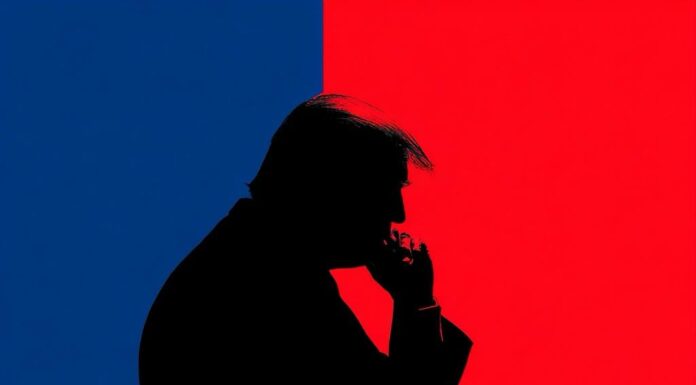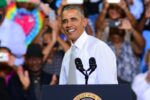President Donald Trump made a peculiar claim aboard Air Force One on Friday, October 24, 2025, suggesting that arranging a meeting with North Korean leader Kim Jong Un might depend on journalists spreading the word due to the country’s allegedly poor telephone service. The 79-year-old president expressed openness to meeting with Kim during his upcoming diplomatic tour of Asia.
When asked by reporters whether he planned to meet with the North Korean leader during his five-day visit to Malaysia, Japan, and South Korea, Trump responded that he was open to such a meeting. He stated that North Korea does not have substantial telephone service, despite possessing numerous nuclear weapons, and indicated there are limited ways to reach the leadership aside from the internet.
The president’s comments revealed a misunderstanding of how diplomatic communications function between world leaders. The U.S. Department of State employs a diplomatic corps consisting of approximately 80,000 foreign service employees, yet he appeared to suggest that members of the White House press pool might have better access to the North Korean leader than his own State Department officials.
While ordinary North Korean citizens face severe restrictions on telecommunications—unable to access the internet, place international calls, or make domestic calls without state surveillance—there is little evidence suggesting that Kim Jong Un or his inner circle operate under the same limitations. North Korea’s reputation as the “Hermit Kingdom” stems from its totalitarian control over information and communications, with mobile networks subject to stringent monitoring by the country’s intelligence services, rather than from technological incapacity at the leadership level.
Trump’s trip marks his first visit to the Asia-Pacific region since taking office in January. The president departed Washington on Friday night for a tour that would include stops in Malaysia, Japan, and South Korea, with Secretary of State Marco Rubio accompanying him. The itinerary includes attending the Association of Southeast Asian Nations summit in Malaysia and the Asia-Pacific Economic Cooperation forum meetings in Gyeongju, South Korea.
During the same exchange with reporters, Trump further indicated he might be willing to formally recognize North Korea as a nuclear power, stating, “Well, I think they are sort of a nuclear power. I mean, I know how many weapons they have. I know everything about them, and I’ve had a very good relationship with Kim Jong Un.” Such recognition would contradict the position held by 191 nations that signed the 1968 Nuclear Non-Proliferation Treaty, including the United States.
The president expressed confidence in his relationship with Kim, suggesting the North Korean leader probably knows about his visit to the region. Trump made history during his first term as the first sitting U.S. president to step into North Korea, briefly crossing the border at the Demilitarized Zone in June 2019 following a Group of Seven summit in Osaka. The two leaders met three times during Trump’s initial presidency, though those diplomatic efforts ultimately failed to produce a lasting agreement on denuclearization.
Speculation has grown that Trump, reportedly eager for a Nobel Peace Prize, might attempt another impromptu meeting with Kim during the APEC summit. However, a senior U.S. official indicated that such a meeting is not currently on the president’s schedule. South Korea’s Unification Minister Chung Dong-young, who handles relations between North and South Korea, suggested the possibility of a Trump-Kim encounter remained open.
Recent months have shown some interest from Kim’s side as well. In a speech last month, the North Korean leader indicated he would consider meeting with Trump if Washington dropped its demand that Pyongyang abandon its nuclear arsenal. Kim reportedly stated he still maintains positive memories of the American president from their previous encounters.
Trump is scheduled to land in South Korea’s Busan on Wednesday, October 29, where he will meet with South Korean President Lee Jae Myung. The two leaders previously met at the White House in August to discuss peace on the Korean peninsula and the potential for renewed Trump-Kim diplomacy.
The president leaves behind a tense domestic situation, with an ongoing government shutdown that began on October 1 and shows no signs of resolution. Democrats have maintained firm positions on extending health insurance subsidies and opposing Trump’s attempts to cancel congressionally approved spending before approving a budget. The impasse continues as Trump embarks on his Asian diplomatic mission, which also includes a refueling stop in Qatar, where he will meet with the nation’s emir to discuss the fragile ceasefire in Gaza.








